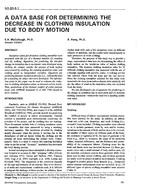Click here to purchase
During power outages servers in the data centers are generally powered by uninterruptible power supplies (UPS). At the same time the sources for active cooling such as CRACs, CRAHs, and chillers stop operating for a period until powered by alternate power sources. During this period servers continue to generate heat without any active cooling. This results in increase in the room air temperature within a short period that can be detrimental to the servers. This paper, with the help of a mathematical model, indicates that the rate of heating of a data center can start initially at a certain maximum level, and can then gradually reduce to a certain minimum level, which is the lowest possible rate of heating that a data center can attain. The rate of such exponential decay is a function of the time constant, which is the characteristic of a data center design and layout. The time constant depends on the heat capacity ratio and the specific surface area of racks in a data center. This paper analyzes various factors that affect these parameters and demonstrates how the time constant can be employed as a matrix to compare the thermal performance of data centers during the power outage period.
Citation: ASHRAE Conference Papers, Las Vegas, NV
Product Details
- Published:
- 2011
- Number of Pages:
- 10
- File Size:
- 1 file , 510 KB
- Product Code(s):
- D-LV-11-C026


